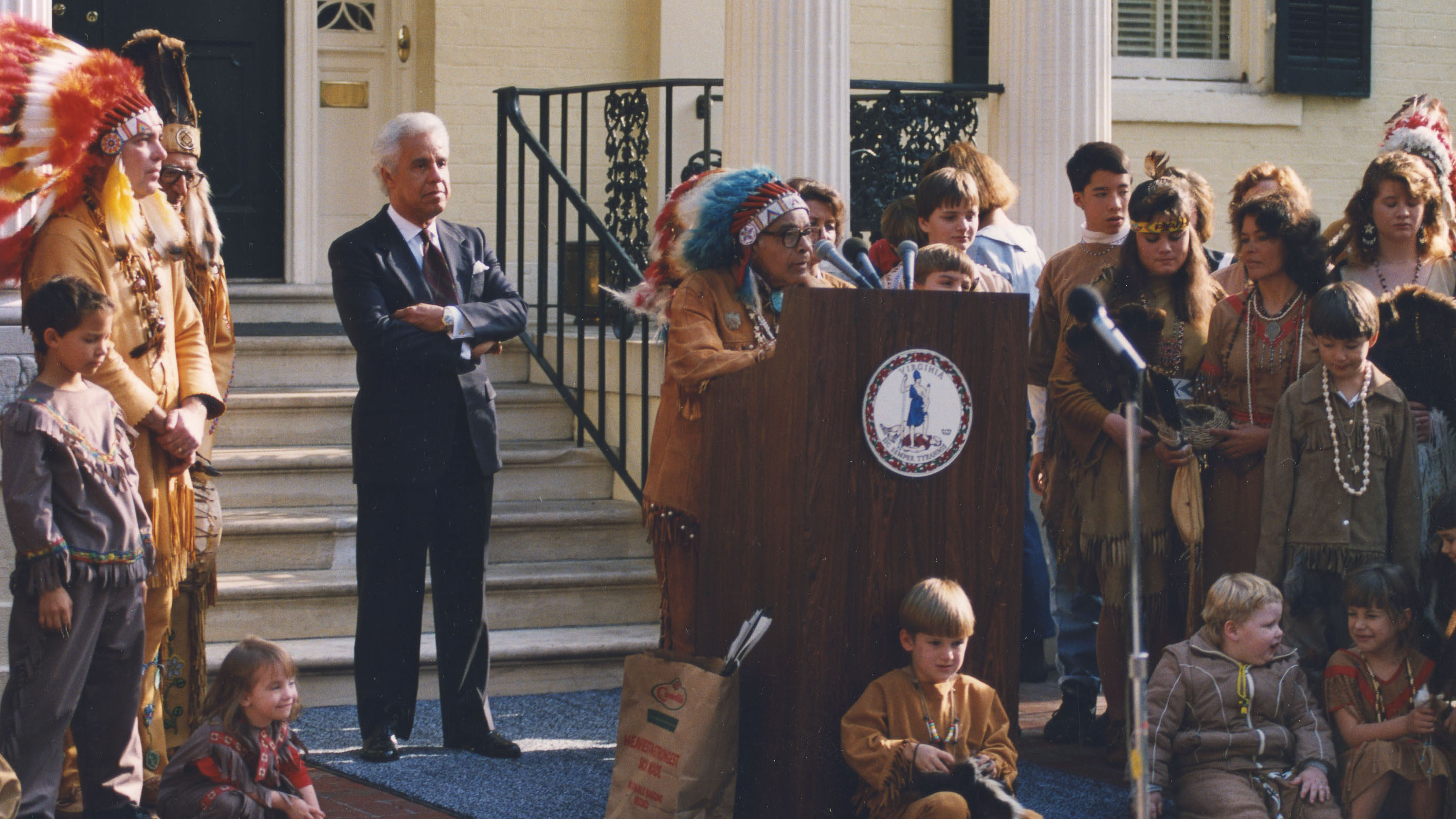
For the first time in its 200-year history, the Library of Virginia is collaborating with state and federally-recognized Indigenous tribes to present historic documents alongside interviews with tribal members and items loaned by Tribes.
The collaboration began in late 2019. Choosing what to exhibit wasn’t easy.
"The spreadsheet is extensive, shall we say. That’s probably an understatement," said Barbara Batson, who coordinated the exhibit.
It was a journey of discovery of missing history within the library’s 130 million-plus collections.
"When you look at the spreadsheet and then you think about how Virginia Indian history is taught in schools— it’s sort of: there’s Pocahontas, there’s Powhatan, there’s John Smith. Then, poof, everybody disappears," Batson says.
"But what is so clear in our records is that Virginia Indians are here. They never went away. They endured a lot of pressure and persecution from the Commonwealth and white citizens. But they’ve always been in Virginia. They’ve always been vital communities. They’ve always contributed to the larger community."
Ashley Craig, the library’s outreach specialist, dove deep into the archives with tribal citizens. They found surprises.
“There’s pow wow images from the ’20s and one of the assistant chiefs for the Chickahominy pointed out, 'Oh, that’s not a Pamunkey person, that's a Chickahominy, and that person is Monacan.' He was pointing out all these people, all these names. And we didn’t have any names. We didn’t have the correct tribes," Craig remembered.
“It was very overwhelming for them to just sit here and then 'Oh, that’s my great grandfather. That’s me years later.' It was fantastic to have all those names and those people and those faces recognized for however many years it’s been in our collection."

Participants dance during a 1928 gathering of five Virginia Indian tribes on the grounds of a house known as Windsor Shades on the Pamunkey River in King William County.
Tribes loaned pieces to the exhibit representing their culture and history: Regalia and a drum from the Cheroenhaka Nottoway, a story quilt from the Nottoway and an eel basket from the Patawomeck.
The oldest— a frontlet— is from the Pamunkey Tribe. The medallion-like piece of jewelry worn on the forehead was given to their ancestral leader Cockacoeske by King Charles II of England as part of the 1677 Treaty of Middle Plantation.
There also are filmed interviews with tribal members centered on sovereignty, culture, identity, community, language and the future.
"It’s mainly listening to what the Tribes have to say. That really is the crux of the exhibition," Batson said.
The library wants to continue working with the Tribes to include their perspectives in the archives. Meantime, the exhibit will begin to raise public awareness about the Tribes in Virginia.
"Most people, when you ask them how many Tribes [there] are in Virginia, they don’t really know,” Craig said. "They don’t really realize there’s a vibrant Indigenous community that is thriving here in Virginia, that is expanding and trying to better the state as well as their people."
The free exhibit, Indigenous Perspectives is located on the first floor of the Library of Virginia in Richmond and runs Dec. 5, 2023 - Aug. 17 2024.




